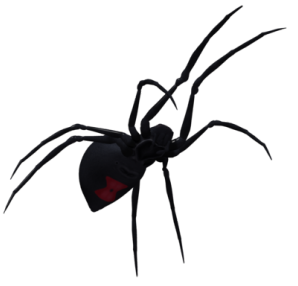Country of Origin: Mexico and Guatemala
Natural Environment and Behavior:
Davus pentaloris, commonly known as the “Guatemalan Tiger Rump,” is a captivating species of tarantula native toMexico and Guatemala.
One of the defining characteristics of Davus pentaloris is its vibrant coloration and distinct patterns. The spider exhibits a combination of black and orange or reddish-brown hues, with bold tiger-like stripes adorning its legs and abdomen. This striking coloration serves both as a means of camouflage in its natural habitat and as a visual display to ward off potential predators. They possess agility and are known for their quick movements, making them fascinating to observe.
These tarantulas are ground-dwelling species, often constructing burrows or using natural crevices for shelter and security. They are skilled diggers and will create elaborate tunnel systems, allowing them to hide and protect themselves from predators. These burrows also serve as a safe space where they can molt, mate, and rest undisturbed.
Davus pentaloris is an opportunistic predator, primarily preying on insects and other small invertebrates in its natural environment. It employs an ambush hunting technique, lying in wait near the entrance of its burrow or on foliage, patiently awaiting the right moment to capture its prey. Once within striking distance, it swiftly immobilizes its victim using its venom before consuming it.
In terms of temperament, Davus pentaloris is generally considered to be a docile species, displaying a calm and less aggressive nature. However, individual temperament can vary, and some individuals may exhibit defensive behaviors if they feel threatened. It’s important to handle them with care and respect their boundaries to ensure their well-being and minimize stress.
Due to its captivating appearance and relatively manageable care requirements, Davus pentaloris has become a sought-after species among tarantula enthusiasts. They are often admired for their beauty and intriguing behaviors, making them an appealing addition to tarantula collections around the world.
Longevity:
Females: 11 years, males: 3 years.
Size:
Up to 10cm.
Husbandry:
Keep at 70-80% humidity and 24-26°C, use a mix of peat moss and vermiculite.
Enclosure Size:
5-10 cm for spiderlings, 10-15 cm for juveniles, and 20-30 cm or more for adult
